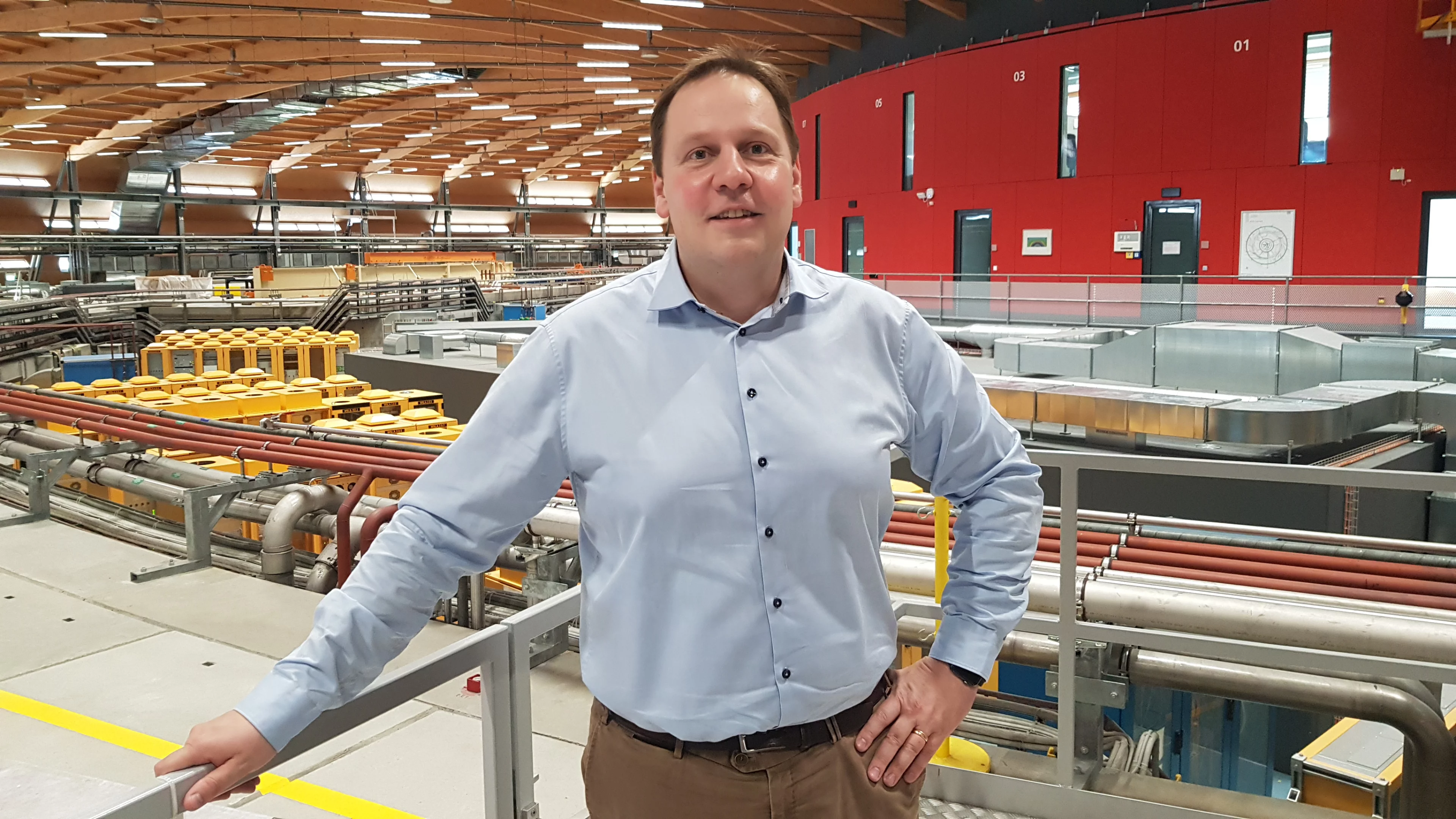Roger Herger wrote his diploma thesis and doctoral dissertation on X-ray diffraction of complex metal oxides at the Swiss Light Source (SLS) synchrotron. At the end of June 2020, he founded the high-tech startup maXerial, together with two business partners. Their goal: to combine industrial X-ray technology with artificial intelligence. We trace his path from research to entrepreneur and show how cutting-edge PSI know-how and laboratory-based X-ray technology ideally complement each other to solve the challenges of the Swiss high-tech industry by means of data-driven materials development.
Roger Herger has been on the threshold of founding his own company three times. During his doctoral thesis at the Materials Science Beamline of the SLS, the idea arose that there was likely to be a market for materials science services for industrial customers. The development of new materials was too fascinating not to be translated into an industrial application. The fledgling SLS provided an excellent environment for materials research. At the same time, hybrid pixel detectors ushered in a new, data-intensive era in the detection of X-rays, and with it the unique success story of Dectris. But first, Roger Herger wanted to gain experience in business before he felt ready to take the step to become an entrepreneur.
His path took him from pharmaceutical R&D to the chemical industry, and away from the laboratory into the world of management. During this time he worked on major international projects for the pharmaceutical industry and was operational chief of staff at a medium-sized chemical company. Parallel to his work, he completed a CAS (Certificate of Advanced Studies) on the fundamentals of business management. An important factor was that his roles allowed him to apply the theoretical knowledge of the CAS in real industrial practice. His boss was also a full-blooded entrepreneur, so there was no better environment to learn entrepreneurial thinking.
In mid-2014, Roger Herger was on the threshold of self-employment again. This time, as well as a business idea, he had significantly more knowledge about the industry. But two decisive factors were still missing: on the one hand, realistic sources of financing for the necessary investments and, on the other, the required network within the relevant market.
Meanwhile, with the advent of Industry 4.0, things began to come together again: digitization and thus the processing of large amounts of data became important topics for the industrial world. He joined the automotive industry and was tasked with driving the digital transformation of laboratories and building a powerful team for applied research and development. In the role of Head of Research and Testing Technology at Thyssenkrupp Presta, he was able to work at the interface of technology and management. A recent collaboration with ANAXAM has finally brought him back full circle to PSI.
Several key trends are influencing industrial research in the field of materials science. In addition to new materials, processes, and methods for the industrial production of high-tech products are also being intensively researched. In such fields, it is important that the associated analytics are non-destructive so that a specific component can be observed throughout the entire production process. In addition, analytics are needed that are capable of analyzing material at the smallest scale. Both of these factors are driving the increased use of X-ray technology in industry. And where laboratory sources are insufficient, PSI's accelerators can help.
With the application of imaging techniques such as X-ray computed tomography or the use of two-dimensional detectors in diffraction experiments, the amount of captured data that requires processing is virtually exploding. New methods are therefore needed to process these huge amounts of data. In recent years, Roger Herger and his team have been actively promoting the combined application of simulations, data science, and artificial intelligence in the field of materials development. To this end, he has established research partnerships with PSI, EMPA, and ETHZ, amongst others. In his work, he has also been able to count on the strong support of management at Thyssenkrupp Presta.
These industrial trends are also very important for Swiss high-tech SMEs. Compared to large corporations, they typically have limited resources to build up in-house X-ray analytics and thus be able to conduct data-driven materials development programs. Driven by this need, the idea for maXerial was born. This time, the markets were ready: Roger Herger, together with his business partners Patrick Bleiziffer (simulation and AI) and Thorsten Wiege (materials and their mechanics), believes in the idea that data-driven materials development will grow to be an important component to help realize the full potential and innovative power of high-tech industry.

